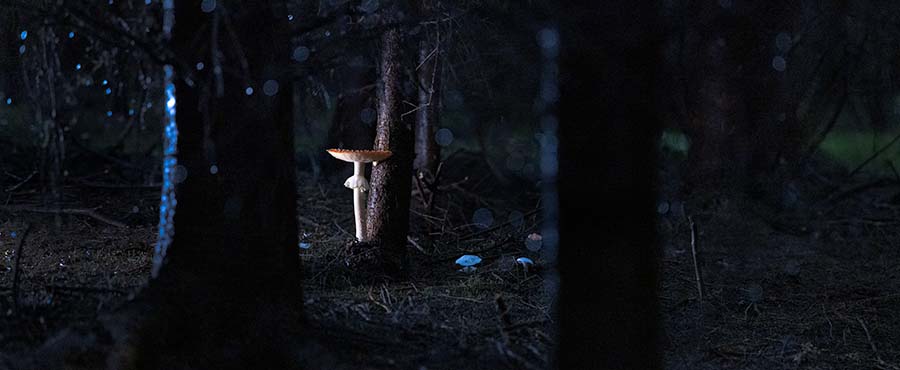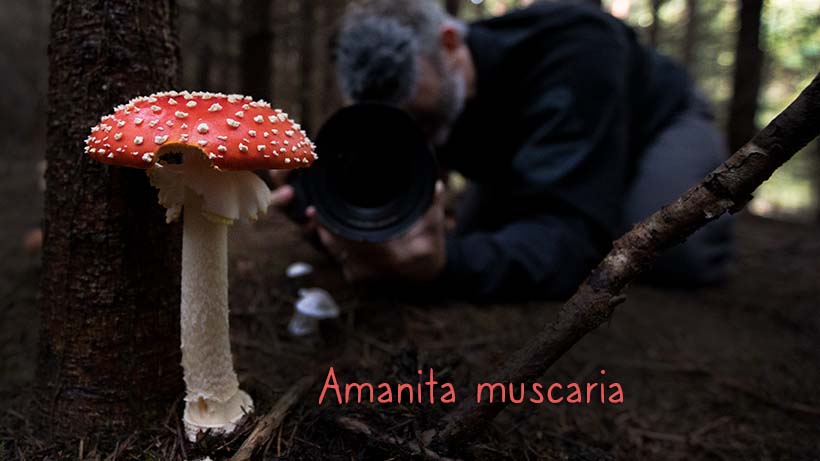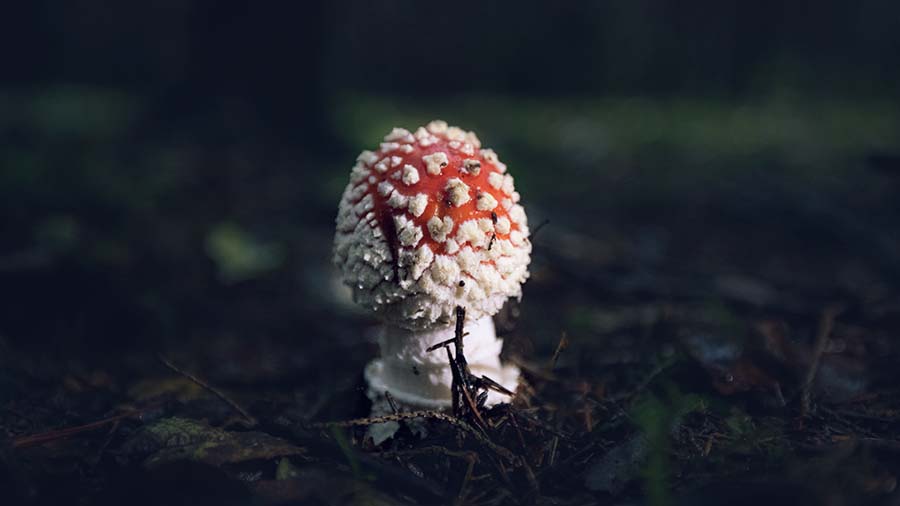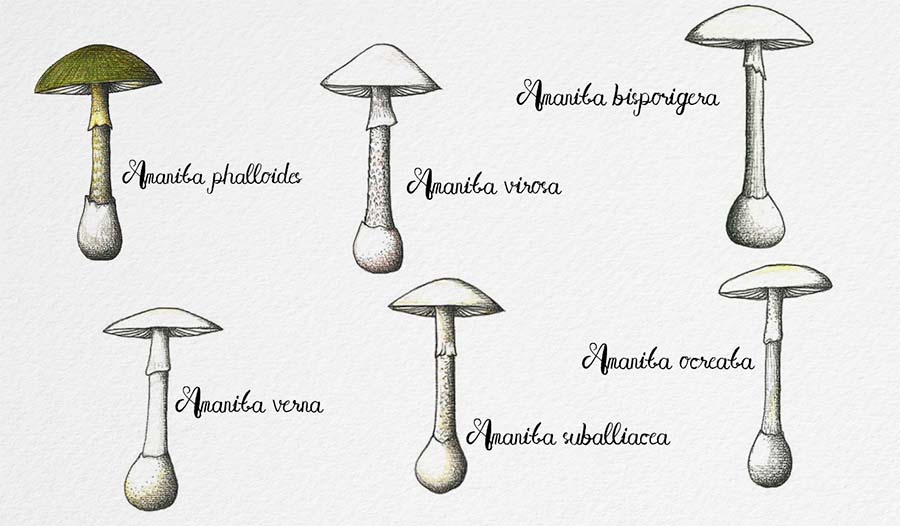The Fly Agaric is Toxic AND Edible

Disclaimer: Never eat the Fly Agaric raw or if you don’t already know a lot about it. This page is intended to give you a basic introduction to this mushroom so you can navigate it’s safe use.

This beautiful red and white mushroom is by far the easiest to recognize mushroom in the world. Many have called it the most famous one in the world. But, it’s not the most used mushroom and it’s also not one with a ton of scientific research behind it. What we know about it comes from a multitude of cultural references, many trip reports online and from a scattering of scientific papers that look at the chemistry (with research done mostly on other animals).
This mushroom is important in our culture, from references in popular culture such as Super Mario Brothers, Alice in Wonderland and Fantasia. However, it seems that if you’re not already deeply into mushrooms, you may not know much of anything about it. That’s why I created this very short introductory video about the Fly Agaric.
The video hopefully gives just enough to get you started, but would hardly suffice if you wanted to explore this mushroom more. I went on a deep dive into this mushroom over the last few weeks and have read everything I could about it. This article should serve as a good first introduction to the main things you need to know with links out to what I found most useful to explore deeper.
How to Identify Amanita muscaria
This is the classic view of a mature fly agaric.

Amanita muscaria in its most photographed form has a red cap with white flecks. However, it is important to note that there are many varieties that have different color variations. Some are brown (not red) and others range from the bright red pictured above to a yellow or even to a white color. The white ones can be vary dangerous to pick though as they look similar to the extremely toxic white Amanitas like the death cap, panther cap and destroying angel.
The spores are white as are the gills. The stipe or stalk of Amanita muscaria is white with a ring-shaped skirt around it. This is the remnants of the partial veil (a type of skin that was covering the gills earlier in development).
Notice the red cap with white spots on it. These are the remnants of the universal veil when it was smaller. Note here how the young mushrooms come from an egg-like structure that’s fully white. As it grows the white covering breaks apart. While not all Fly Agarics in the wild retain these flecks, most do and it’s an easy way to identify them (when they have it).

Deadly Mushrooms that look like Amanita muscaria
If you ever intent to experiment with an Amanita, you first need to make sure you can also identify similar Amanitas – as this family contains some of the deadliest mushrooms. Famous deadly mushrooms include the Panther cap, death cap and destroying angel to name a few. The following 6 Amanitas are responsible for close to 95% of the mushroom deaths.

Where can you find the Fly Agaric?
The fly agaric is found all over the world in symbiotic relationships with trees such as birch, fir, spruce and pine. It has also been found on other plants like Eucalyptus in places that it has been introduced. Originally the fly agaric was believed to be a Northern Hemisphere mushroom, but is now found in other locations, having been brought around the globe accidentally (and sometimes intentionally) by humans.
The Chemistry of Amanita muscaria
Amanita muscaria is made of a complex of chemicals. Understanding the mix is key to understanding both the safe way of eating this mushroom. It also helps understand why there are so many legends surrounding it.
Essentially the fly agaric contains two main chemicals – ibotenic acid and muscimol. Ibotenic acid is the main toxic compound in the mushroom. It is the primary compound that will cause the negative effects of a mushroom poisoning. Ibotenic acid, however, breaks down into muscimol. Muscimol is a psychotropic compound that has a lot of beneficial effects of ingestion. While it’s sometimes described as having hallucinatory compounds it seems more aptly described as a sedative-deliriant. More on that later.
How many people die from Amanita muscaria poisoning?
Even though every old mushroom book will list Amanita muscaria as a toxic mushroom (this isn’t exactly wrong), it is also edible and rarely deadly. This is confusing for most people. A good analogy is alcohol which has a deadly toxin that alters brain functions and can destroy the liver, but in moderation is used all the time. Amanita muscaria is similar. Careful processing, known as decarboxylation, can reduce the amount of ibotenic acid, which is the most dangerous compound.
In the last 100 years there do not seem to be any fully reliable reports of deadly poisoning from Amanita muscaria. There are reports of hospital visits though. It should also be noted that there is no antidote so hospital staff can only help you recover from it.
While Amanita muscaria might not be as deadly as most people think it is, it still seems irresponsible to first list it as edible with warnings. That’s why it’s almost always put simply in the category as poisonous or toxic. Only the advanced users will discover the best ways to prepare it and use it.
What is eating Amanita muscaria like?
With all the talk about how you can eat the world’s oldest psychoactive intoxicant, you’d think that it might be something that people who crave psychedelic journeys would use all the time. The truth is far from that. It’s a difficult mushroom to use and many experienced psychonauts stay away from it. Those that use it often say that it’s ok at very small doses, giving you some nausea before a calming feeling. At larger doses though it is an extremely bad trip with drunken deliriums, nausea, vomiting and sweat-filled sleep. Here is a great trip report from an experienced Youtuber.
How do you prepare Amanita muscaria?
The internet is full of many ways to prepare Amanita muscaria. Some cook them first. Others mix them into alcohol. Still others make a tea. Maybe the most widely used practice is smoking them. Yet, science does seem to indicate some better ways to prepare them than others. First, it’s important to know that ibotenic acid (the bad compound) is the most abundant in fresh, raw, mushrooms. Eating them raw is a great recipe for getting sick. By drying them between 165 and 195 degrees F first, you convert about 30% of the ibotenic acid into muscimol. That’s a great first step. Cooking them will often break down the substance entirely, so users that do this may not feel many symptoms at all. These Youtuber’s cooked some up raw and did experience some very subtle effects.
The best method I could find was from this very comprehensive and well-researched report. In this case you’d dry them. Grind them into a powder with a mortar and pistol. That can be added to boiling water for 20 minutes and then strained out into a tea. However, it’s also worth noting that AmanitaDreamer has other well practiced Amanita techniques on her very helpful site.
The dose is the hard part as it varies between mushrooms. It also depends on how much ibotenic acid you’ve converted. Fresh mushrooms can be a tricky thing to digest and aren’t recommended.
I spent an hour chatting with AmanitaDreamer, who has great resources here, about how to prepare Amanita muscaria. Here is the Zoom session if you want a deep dive.
Fly Agaric’s maybe why Santa is red/white and the reindeer fly
Amanita muscaria is thought to be world’s oldest intoxicant. It appears to predate humans use of alcohol by almost 10K years. While references to it seem to be all over N America and Asia, the strongest references go back to the reindeer herders of northern Siberia and Europe.

These reindeer herders used Amanita muscaria mushrooms in their cultural practices. These mushrooms are common growing under conifers in the fall in these regions. Shaman in the group would collect them for others in the community (often in special red outfits). They’d dry them in the fir and spruce trees – which is the best way to reduce some of the ibotenic acid (which can probably look very much like ornaments hung in the trees). Then, these red and white “gifts” were delivered to the community by the shaman. Because of the house designs and heavy snow, sometimes the easiest way in the houses was through the roof or chimney.
Reindeer also tend to like eating these Amanita mushrooms. I’ver personally documented deer as far south as NC eating them on my trail cameras:

What’s fascinating though is that reindeer can act as a first filter to convert ibotenic acid to muscimol. You see, muscimol (the better compound), is also excreted in the urine of the reindeer. Shaman could act like this first filter too. That meant reindeer’s and shaman’s pee (after they’ve ingested an amanita mushroom,) can be very potent.
Should you try Amanita mushrooms?
Obviously this depends on your intent. Are you going to get addicted to Amanita mushrooms? It seems like the answer to that is no. Most trip reports indicate that they won’t be trying it again (especially if they eat too much). Amanita mushrooms also don’t seem to be a powerful medicine like many other traditional mushrooms and plants tend to be. Users don’t often report brining back a lot. That’s not to say you can’t. Obviously it’s an old (maybe the oldest) intoxicant. Yet, this may have been the only intoxicant in the areas it was used so it’s likely that humans have always liked altering their consciousness and if this was the only one around, it got used.
The point is, that there are plenty of other compounds that might be both safer and more beneficial than Amanita muscaria – at least at first. While I’ve never tried it, I am tempted only to get a feel for what ancient cultures must have felt when using it. It’s just a scary thing to use without another experienced person around, something that in this day and age is hard to come across in person.
More research
If you do ever want to try eating this mushroom, it is important that you know exactly what you’re getting into. Here are the best resources I found on it in various categories.
- How to Prepare and Eat Amanita – by AmanitaDreamer
- Understanding the Science of Amanita – and converting Ibotenic acid.
- A full guide to preparing and using Amanita muscaria
Disclaimer: The StoneAgeMan blog is for informational purposes only and does not constitute medical advice. We are not responsible for any actions taken based on the information provided. Always consult a healthcare professional before using fungi for medicinal purposes.

